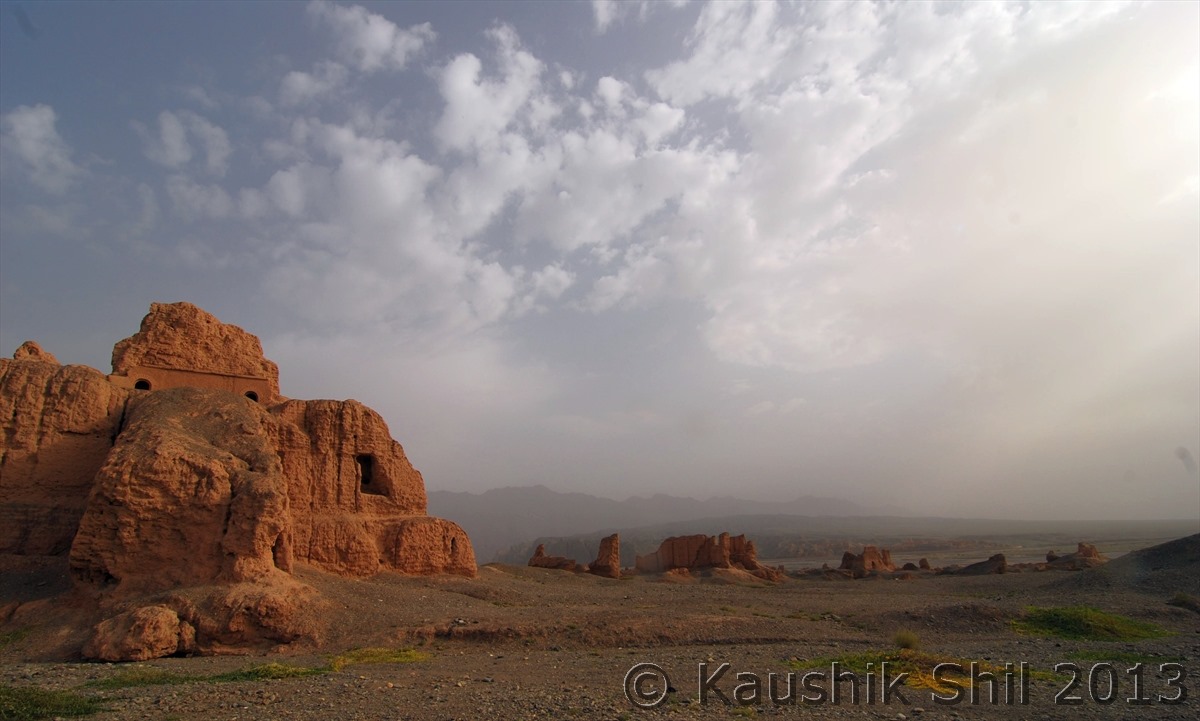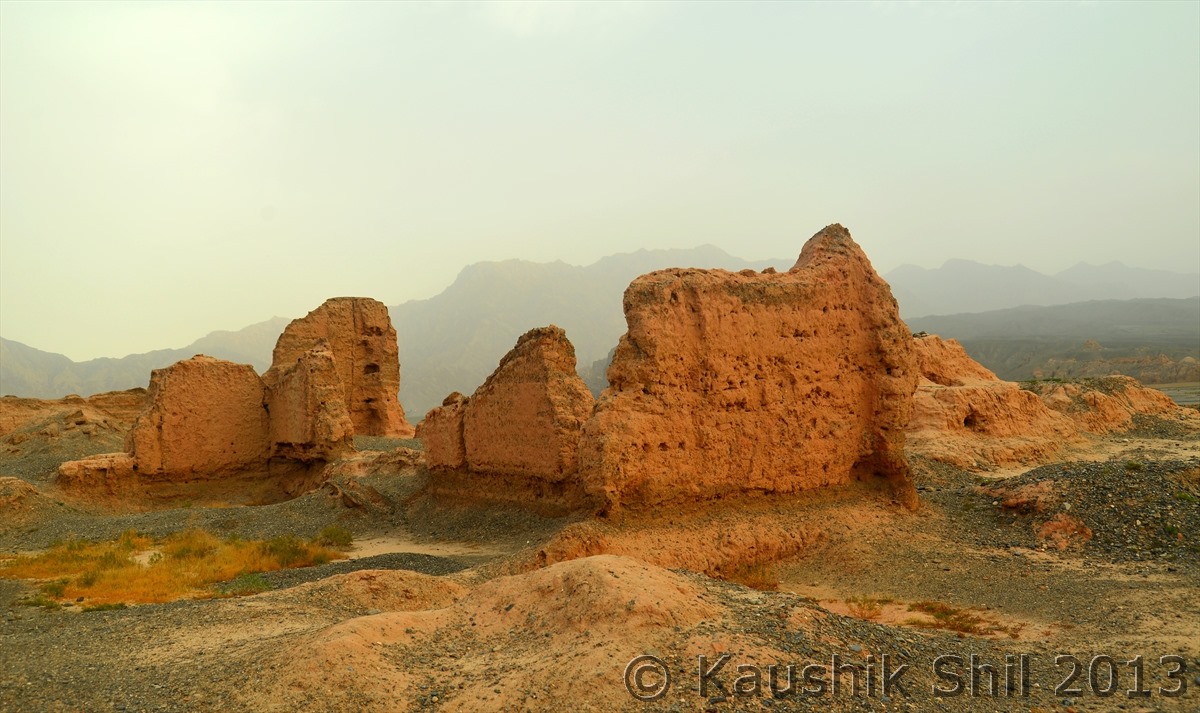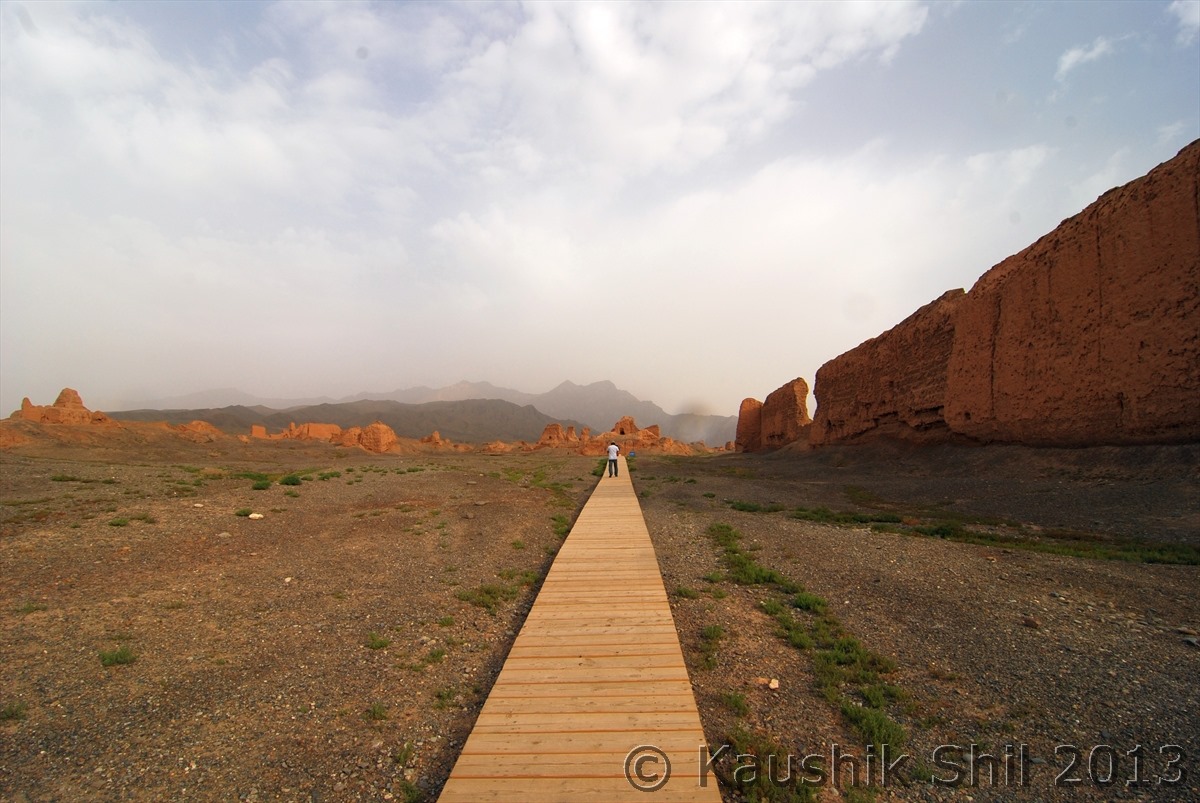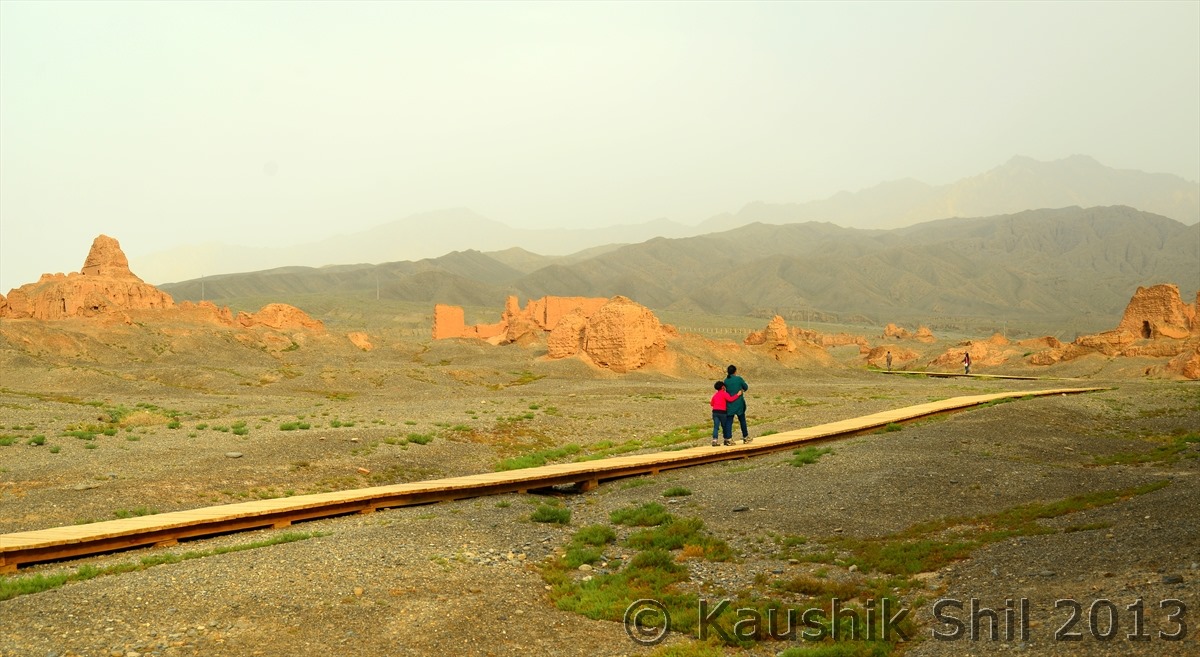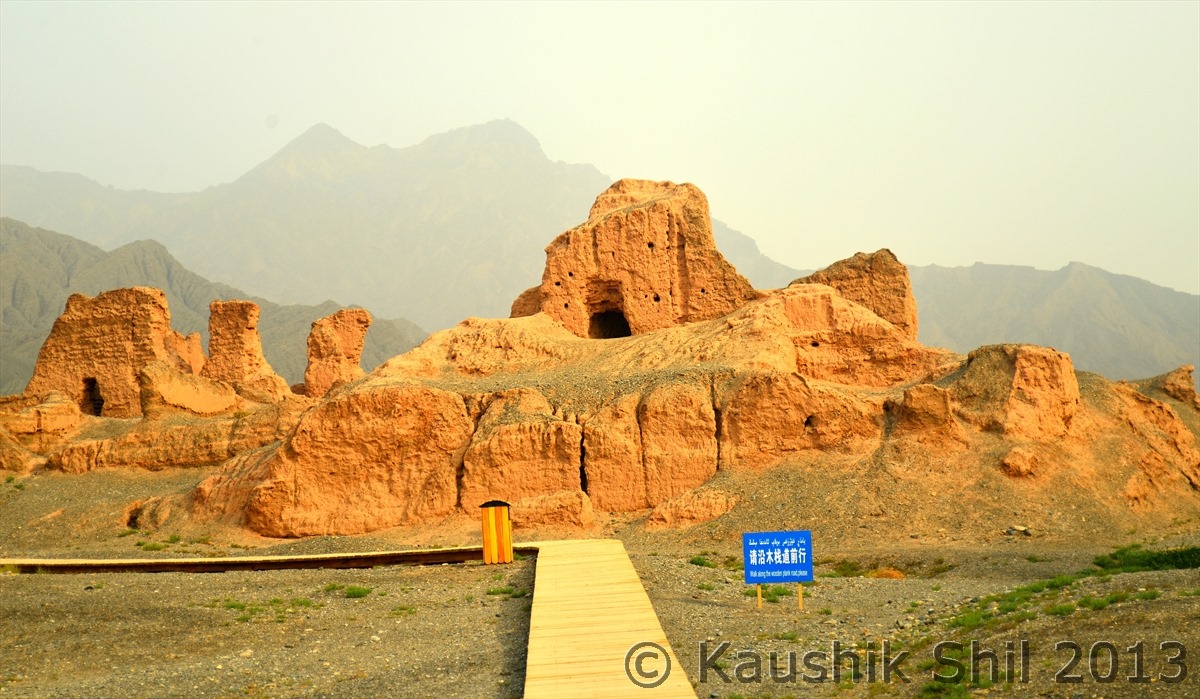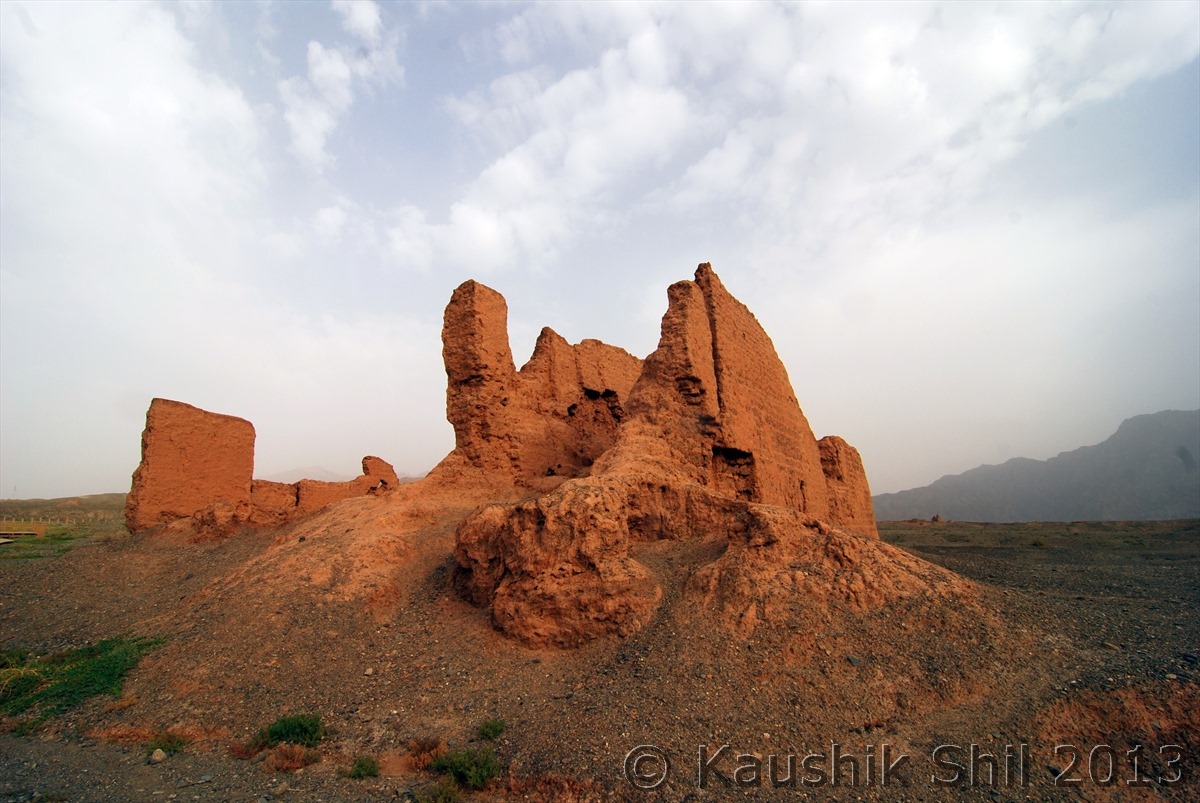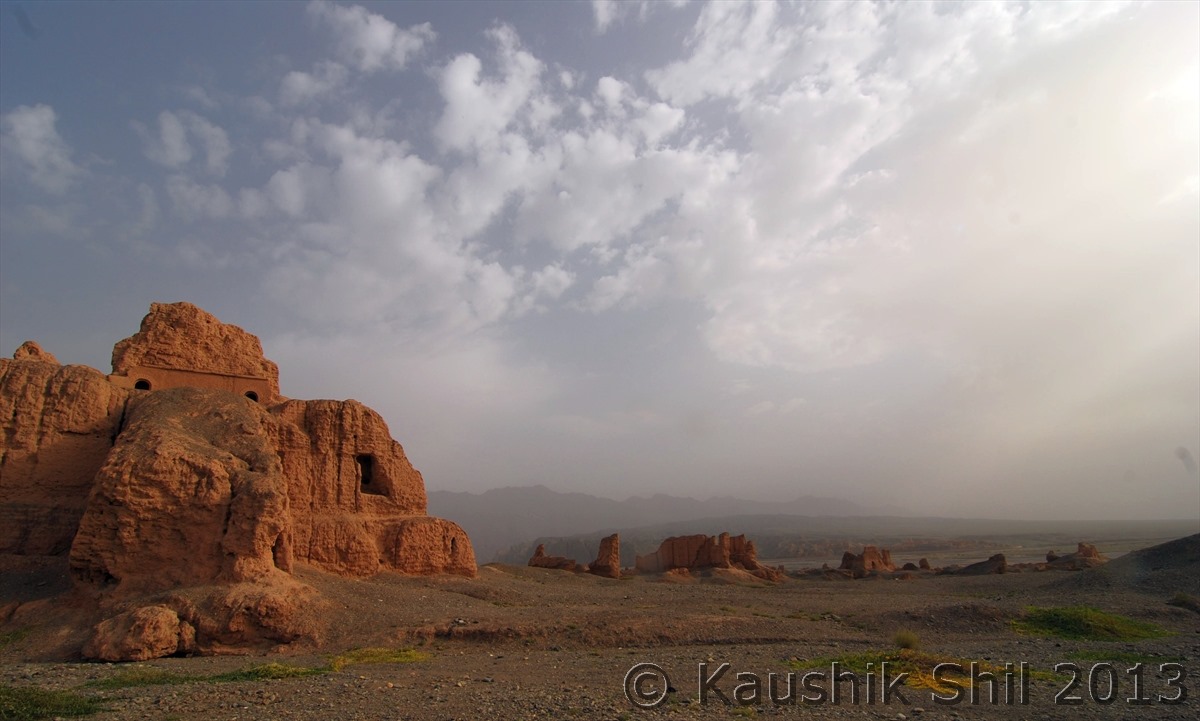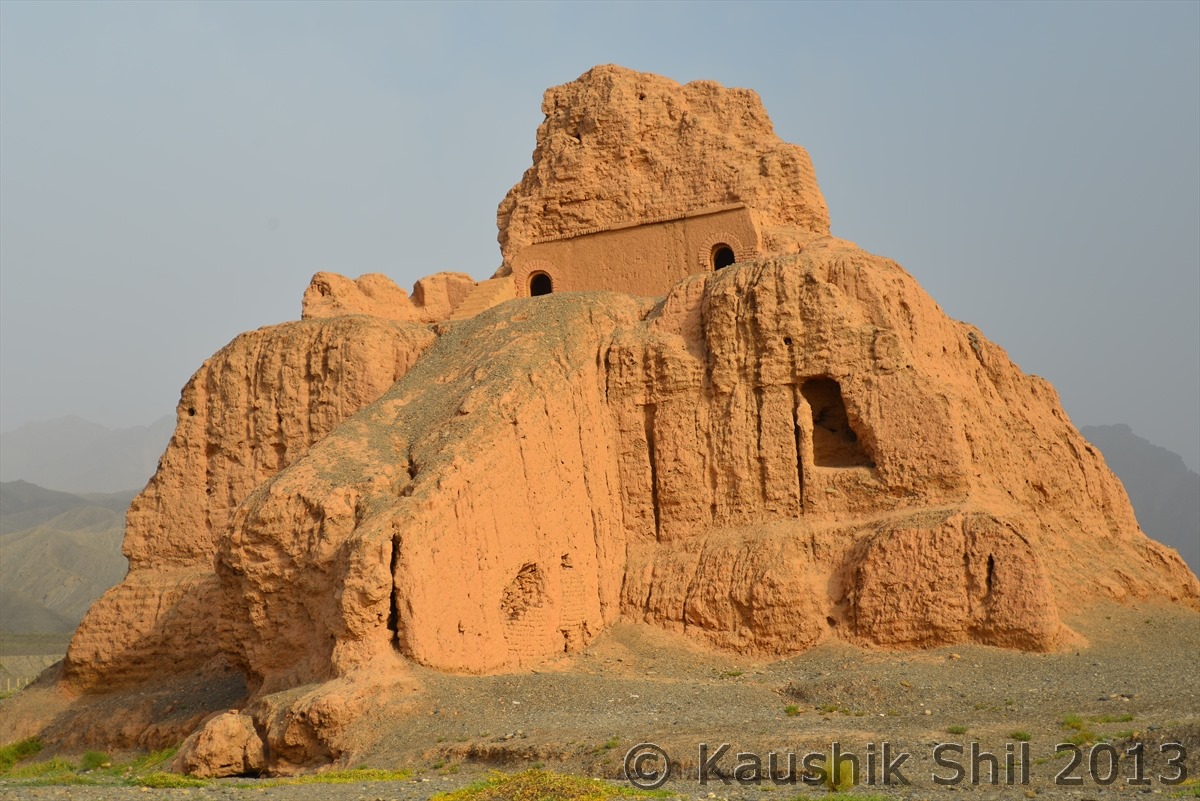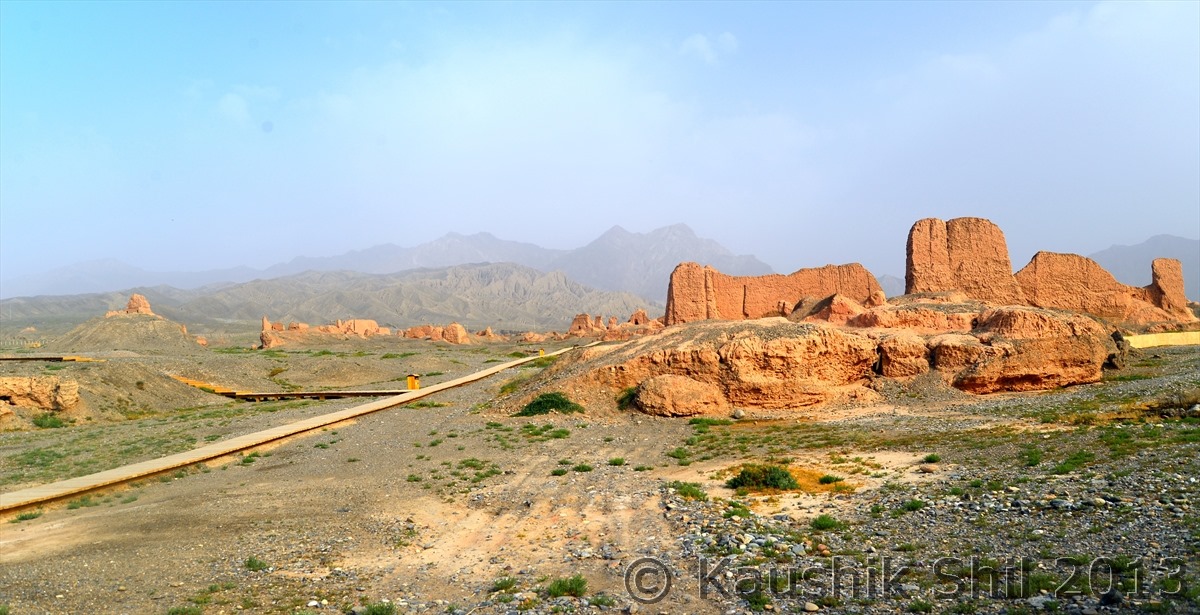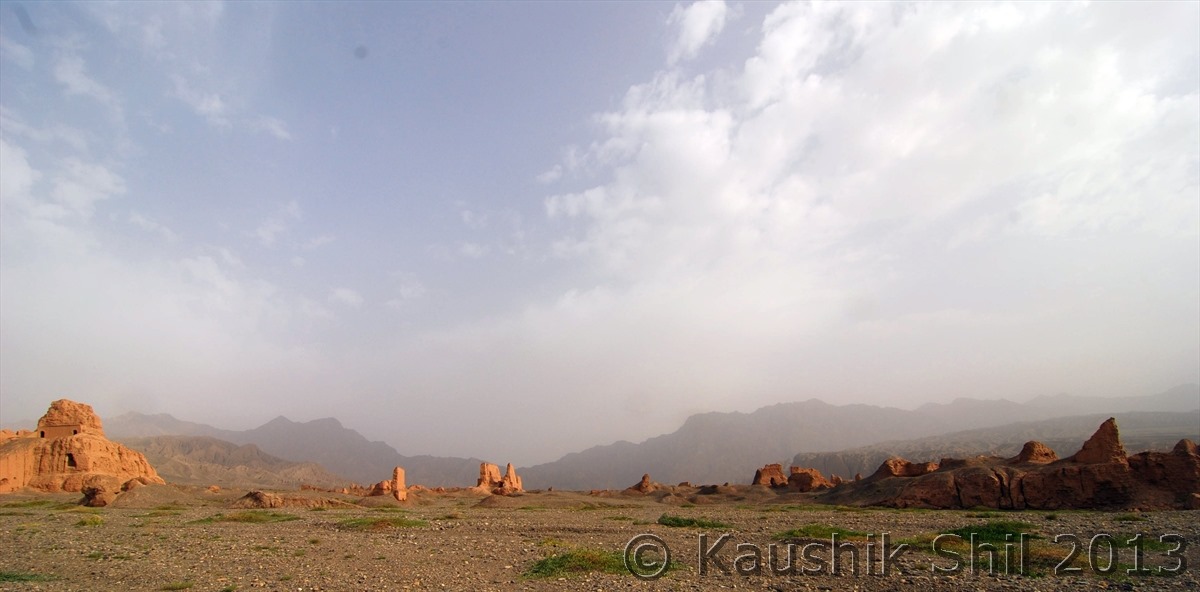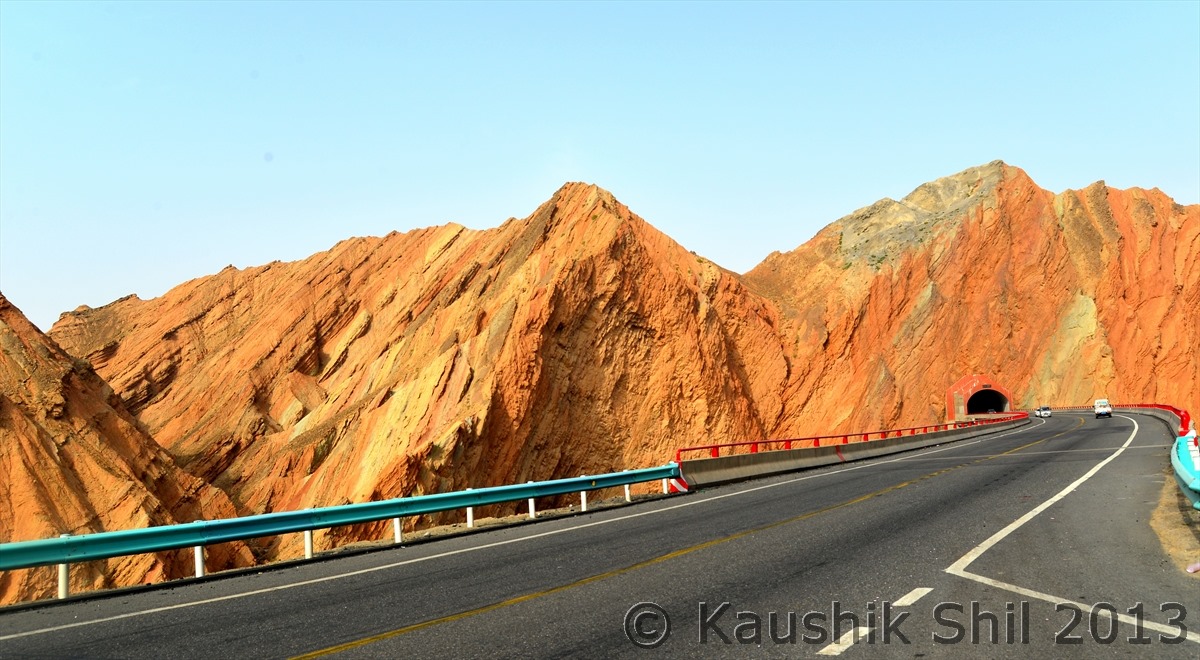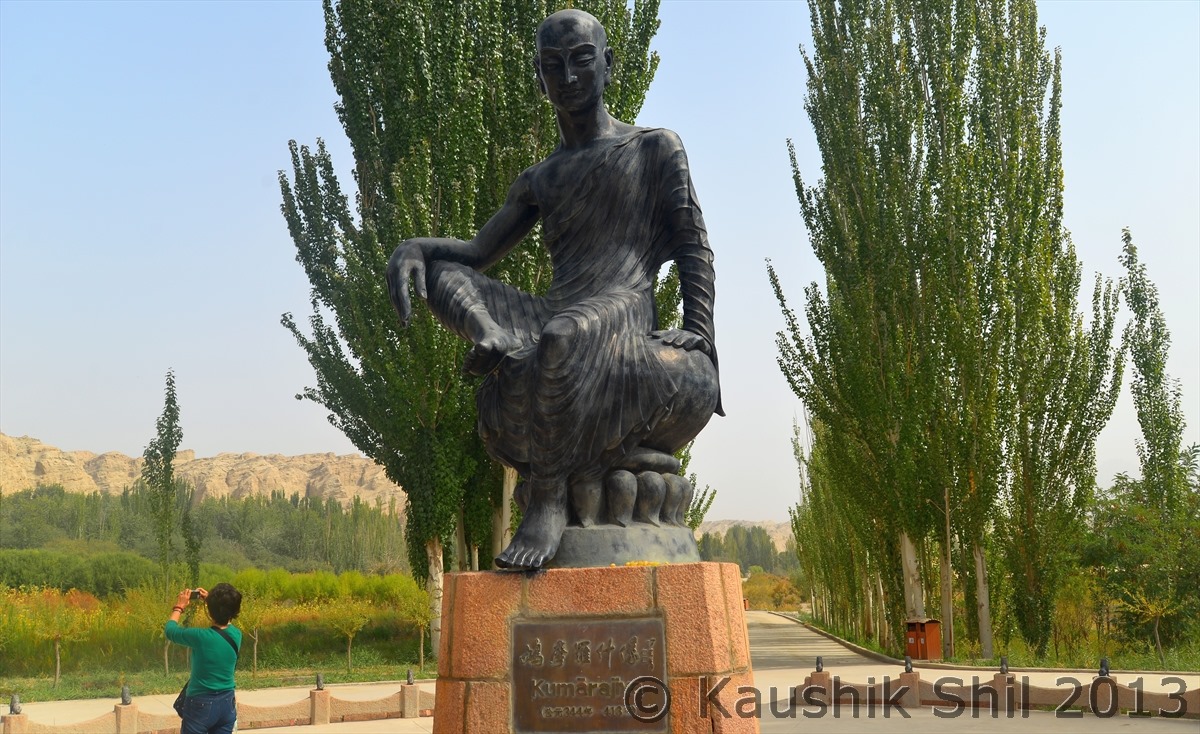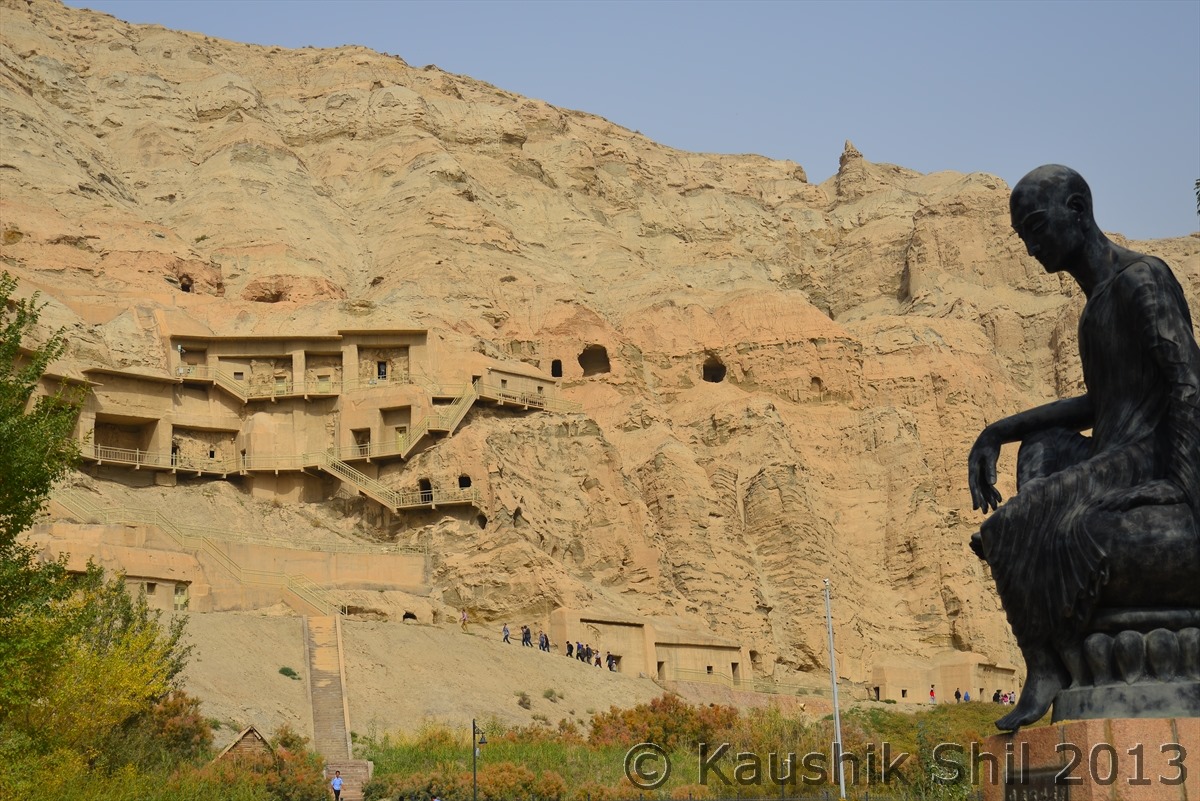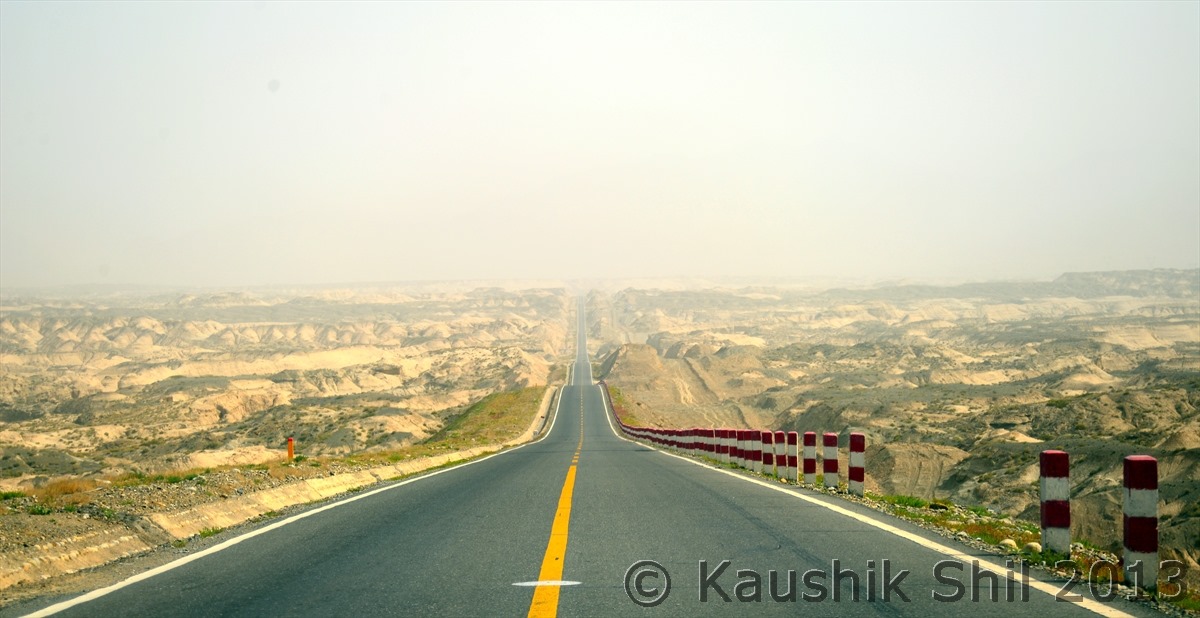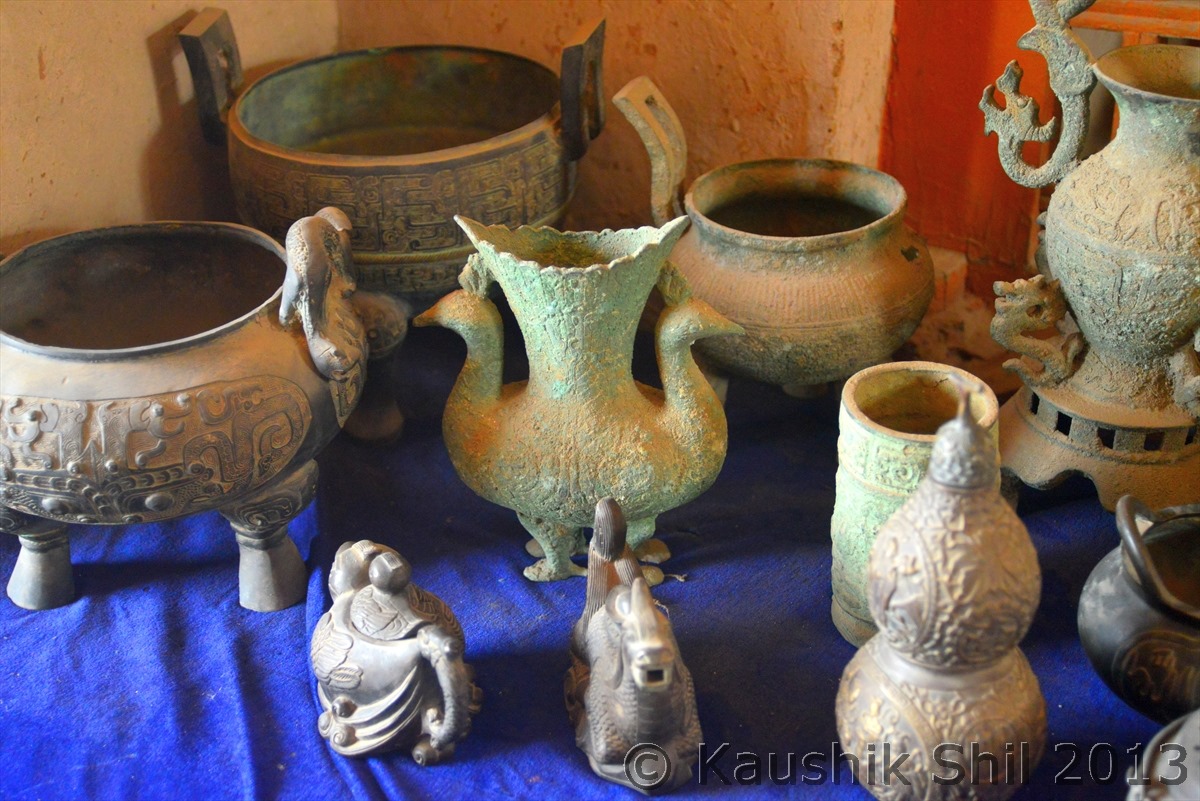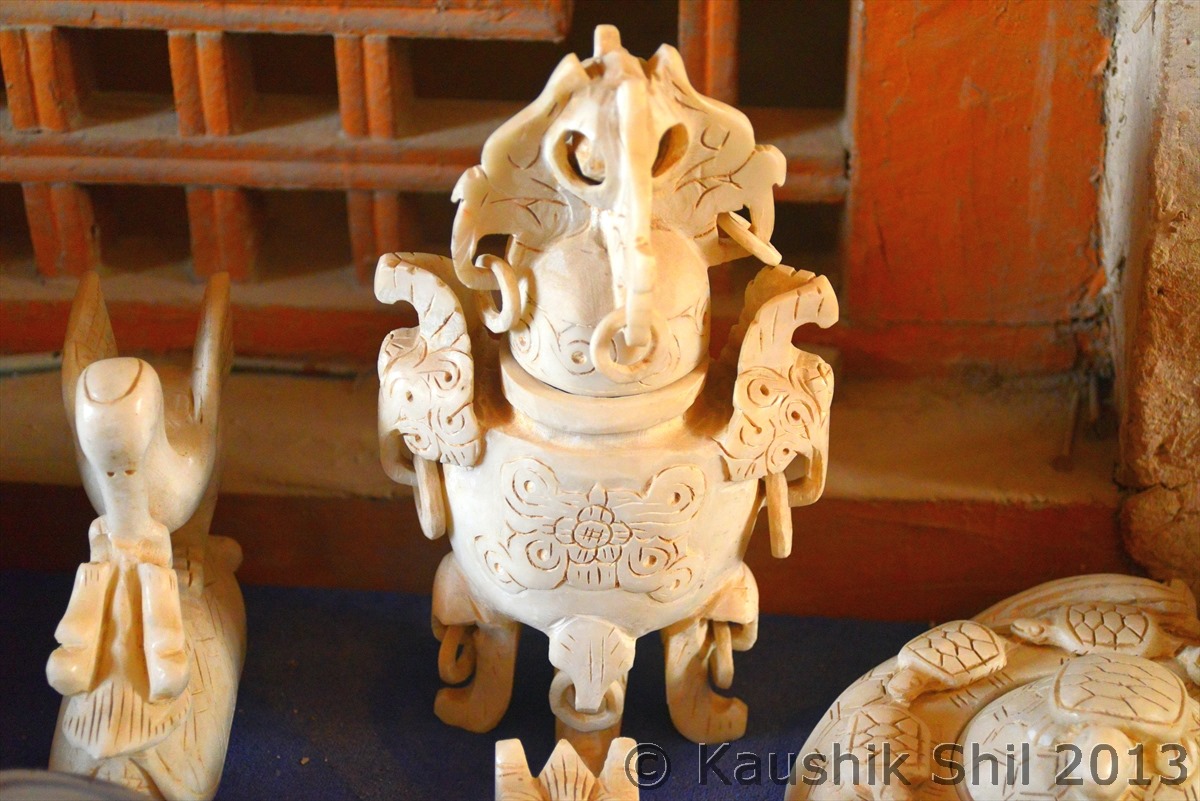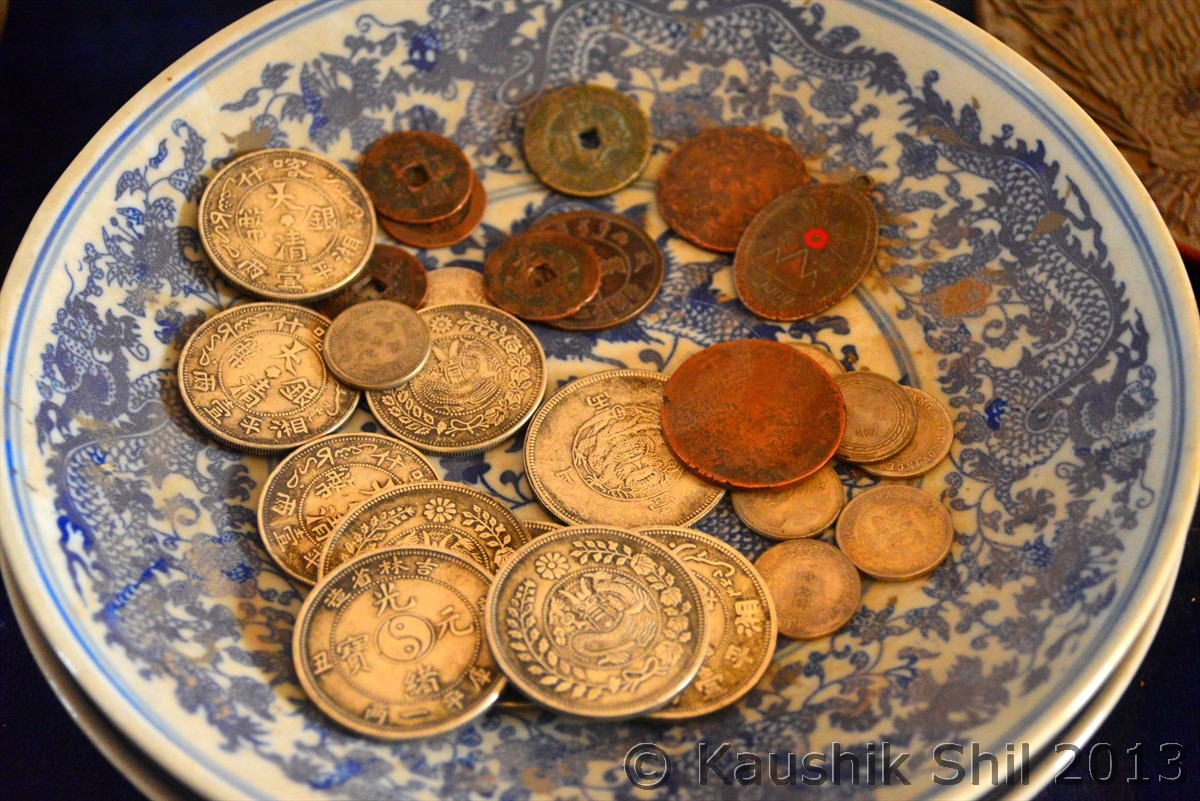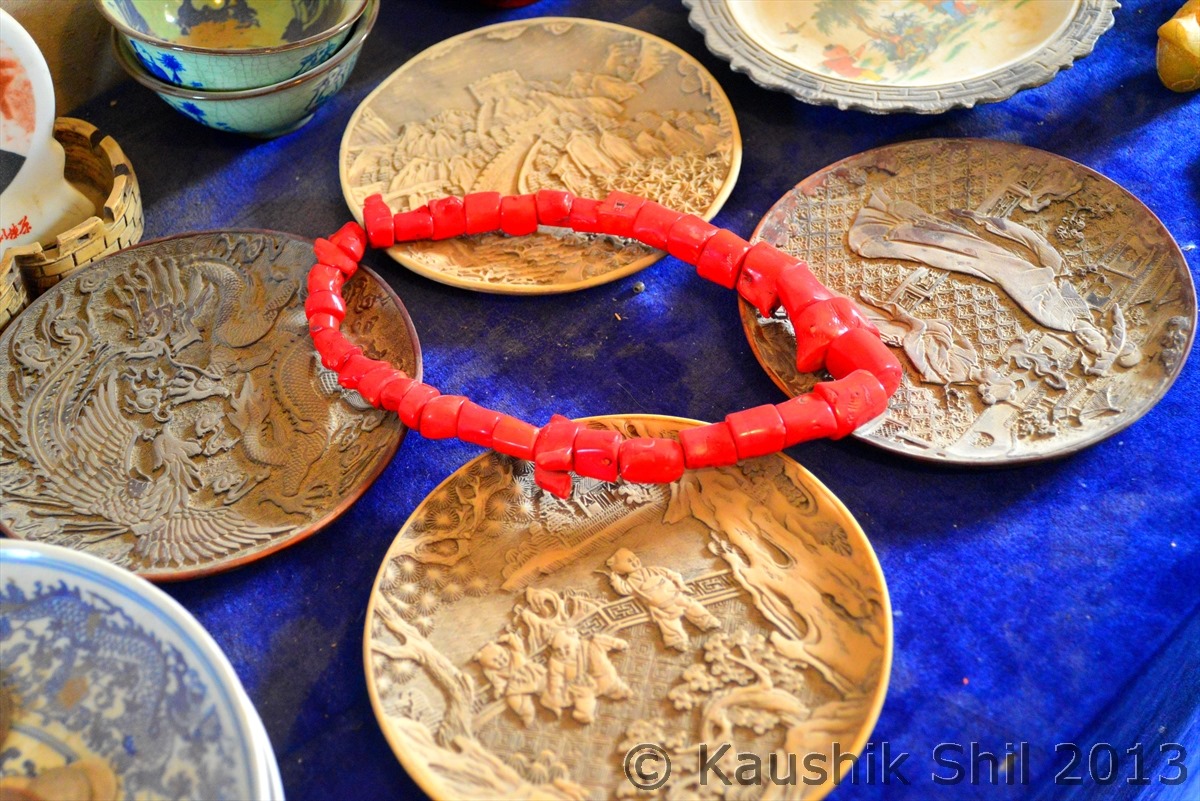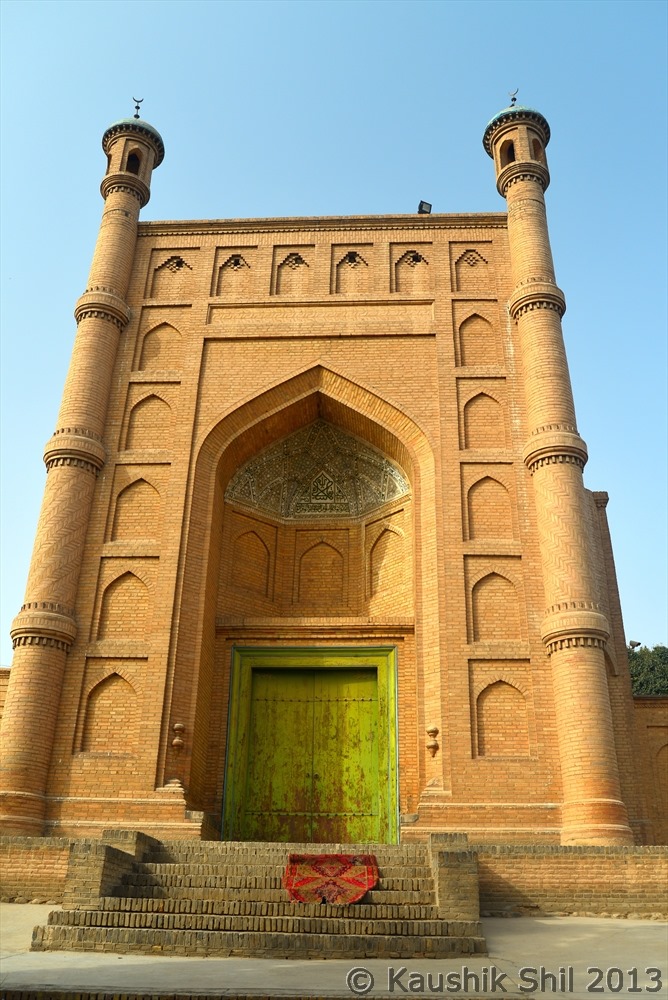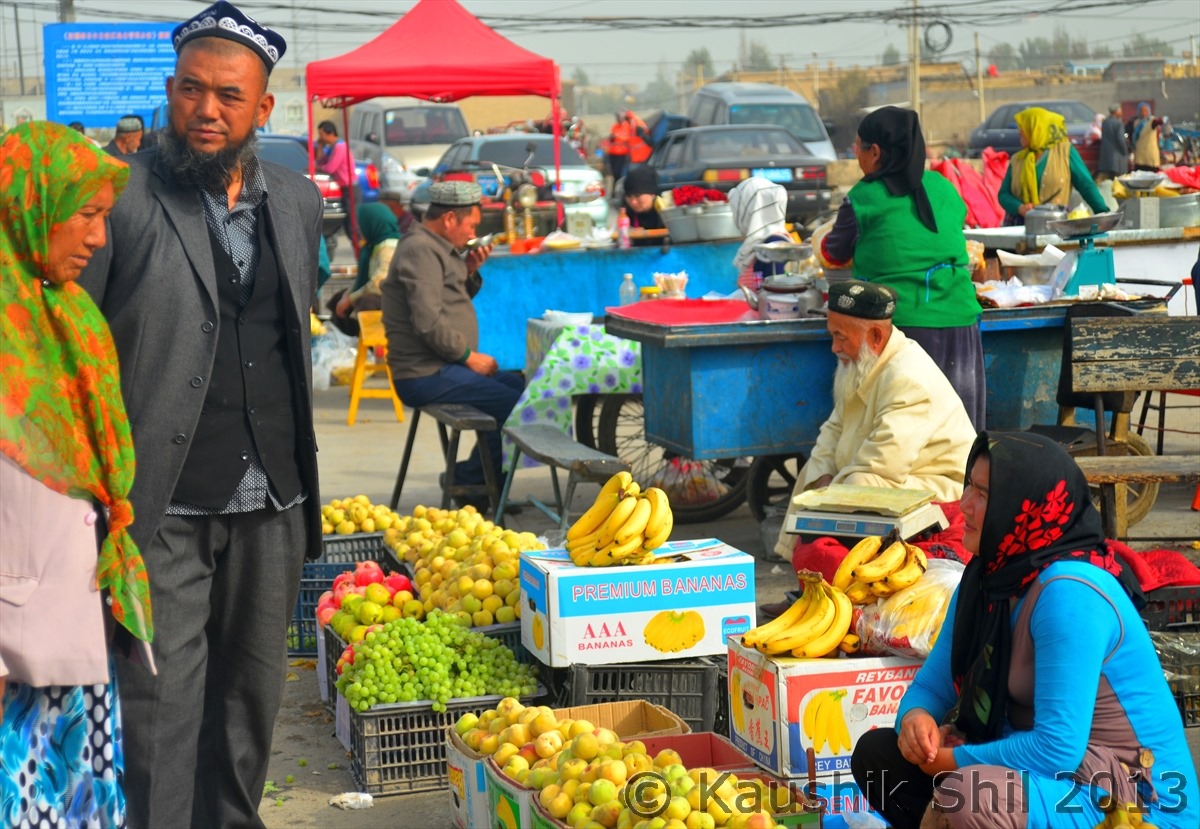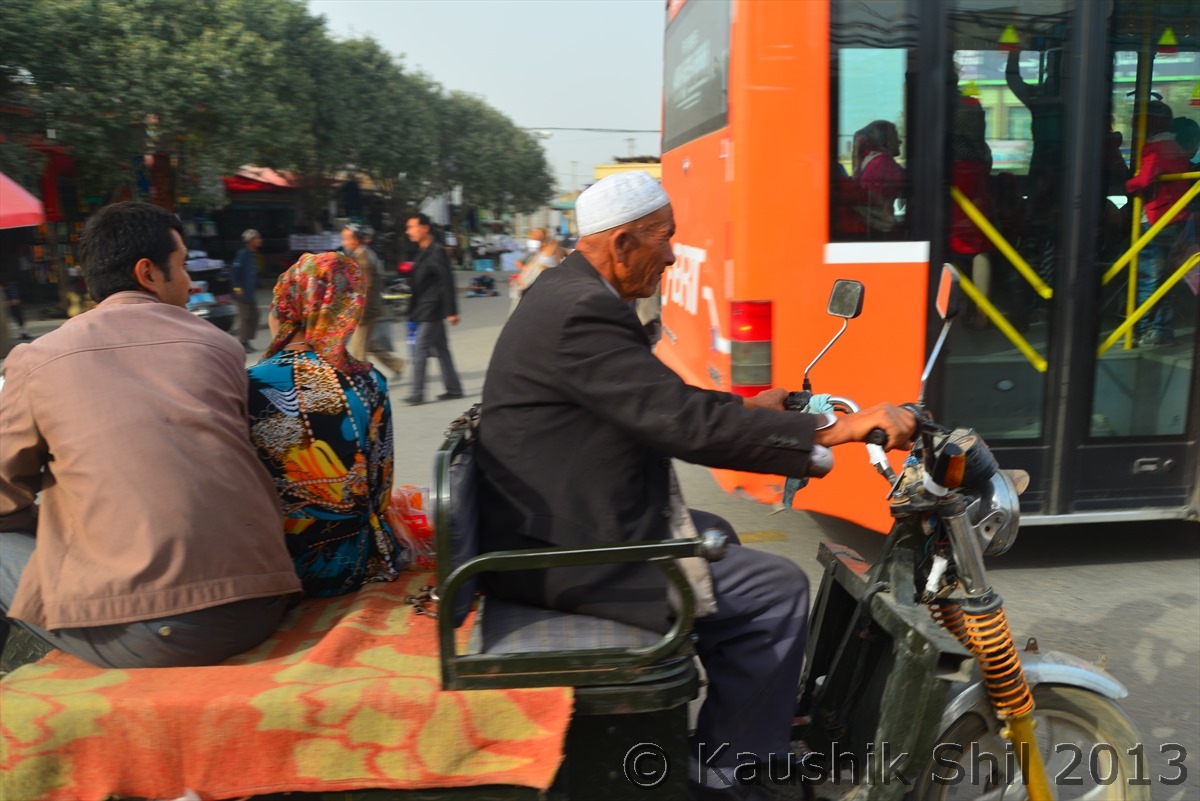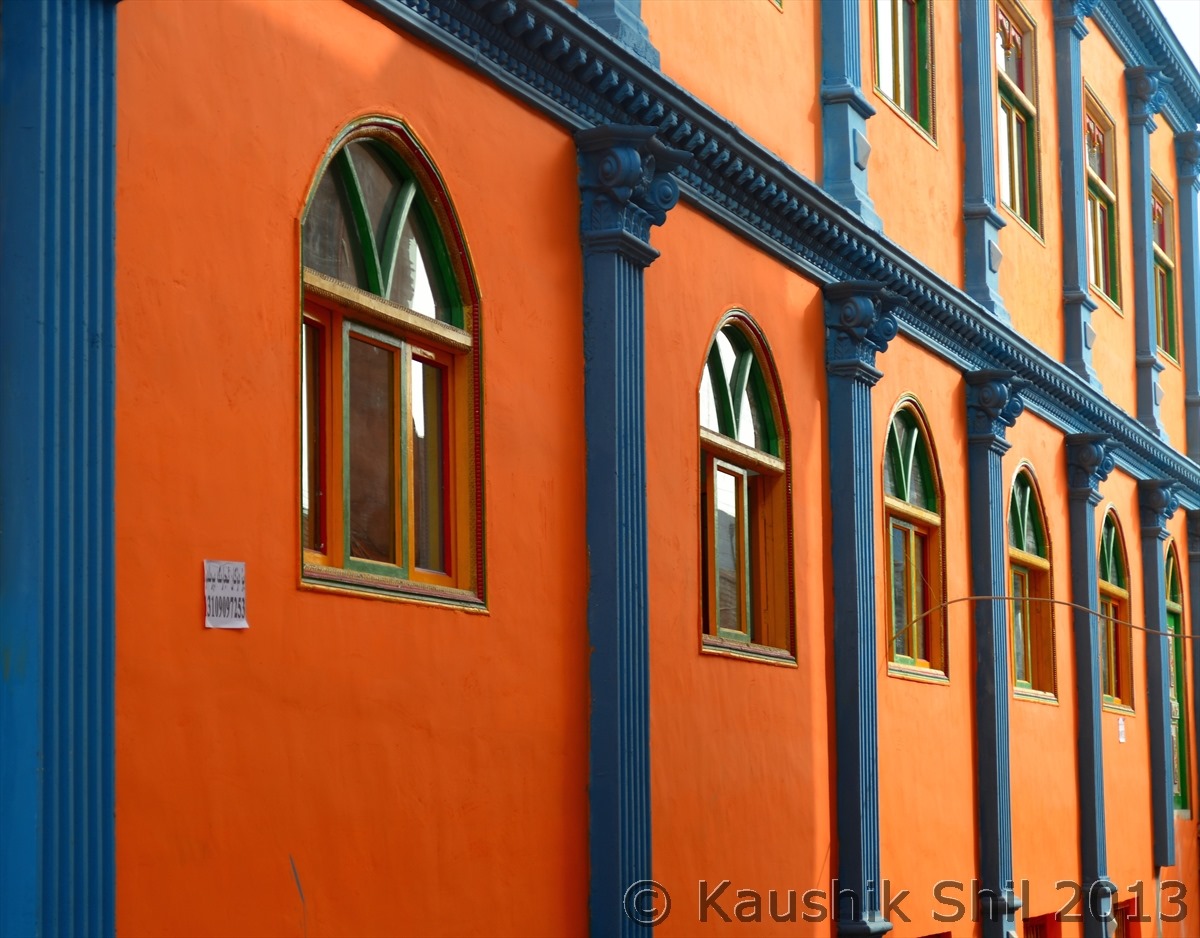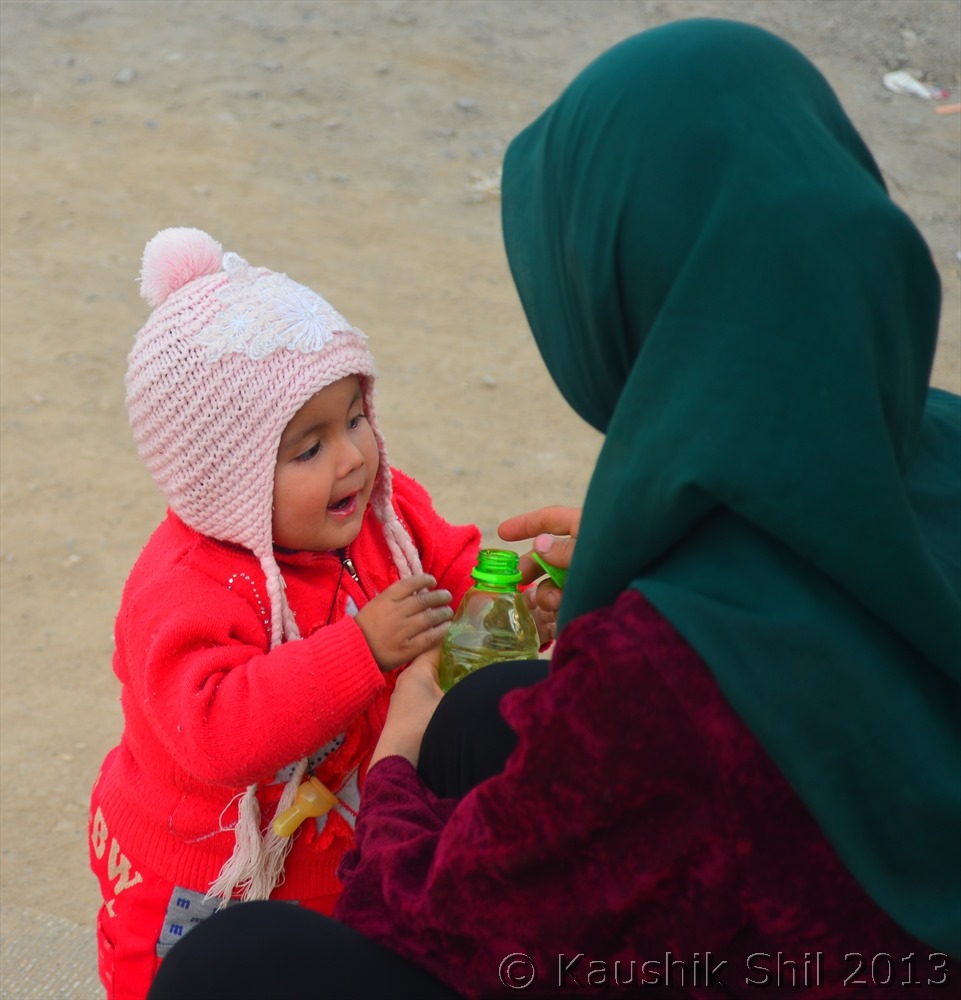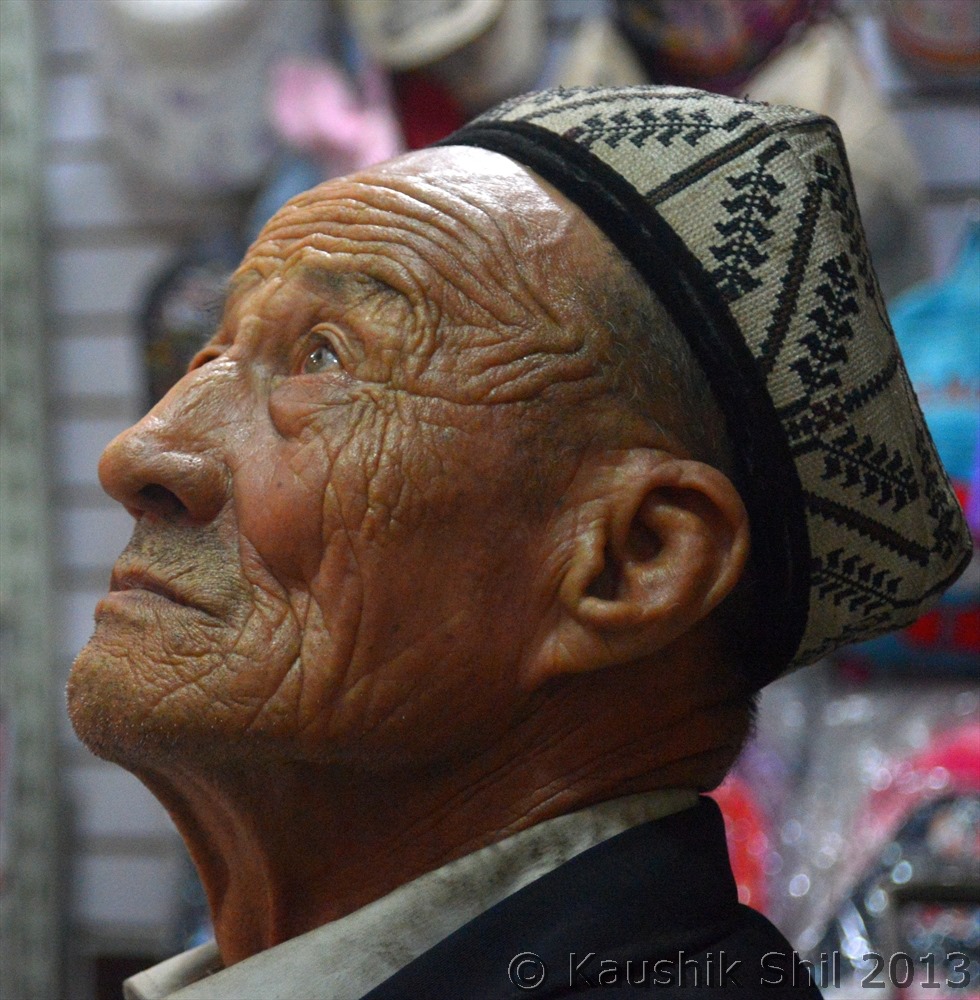Day 9:
This was our first day with Hasan and we were little skeptical about how he would be specially after having such great time with Ablajan but ice broke very fast as Hasan turned out to be a very nice and helpful gentleman. Today our plan was to visit around Kuqa. In modern Chinese economy Kuqa is not an important town but two thousand years ago, this was the largest town among all the western kingdoms. By 4th Century CE, this became one of the most important trade hub being in the crossroads that continues from Turpan to Kashgar in East – West and Hotan to Junggar Basin via Ili Kazakh region in North South. The North – South route crosses Taklamakan to meet with the Southern Silk route at Hotan that comes from Dunhuang to the Southern rim of Taklamakan desert towards Kashgar.
Kuqa is known as cradle of Buddhism in whole China as this is the place from where Buddhism started spreading across whole China and thus this place was having some connection with ancient India. The famous linguist and scholar Kumarajeeva was born and brought up here whose father was from Kashmir and mother having blood relation with local king. Kumarajeeva was born in 3rd Century, completed his education from Kashmir and was an expert in Sanskrit language and Brahmi alphabets earned his place in Chinese Buddhist history as “Nineteenth Patriarch of Buddhism”. He returned from Kashmir after finishing his education to Kuqa as a respected teacher of Hinayana Buddhism and later taken to Gansu province by the king where he lived for 17 years became famous for his prolific translation of Buddhism Manuscript from Sanskrit to Chinese.
Prior to these accurate translation of Indian Buddhist Philosophy, the Chinese believed this new religion was a foreign barbarian form of their own Taoism partly because both religion strive towards a state of salvation and partly because lack of understanding of Chinese to the principle doctrinal differences – Chinese language is ill suited to illustrate many subtleties and abstract reasoning in Buddhism that Sanskrit can gracefully accomplishes. Only after these translations started by Kumarajeeva, Chinese started to understand the real Buddhism. Still, the Chinese Buddhism bears very limited similarity with Indian Buddhism and follows the simplest doctrines of the religion. From Ninth Century Islam was introduced in Kashgar and Kuqa and other parts of Xinjiang slowly slipped into Muslim culture after eventual conversion.
In the end of Nineteenth century an ancient Buddhist stupa was excavated in Kuqa and several century old manuscripts were recovered and later sent to Asiatic Society of Bengal in Calcutta for a translation where it was discovered that these scripts were written way back in 5th Century in Sanskrit Language using Brahmi alphabets by some Indian Monks and dealt with subject of Medicine. I really felt amazed to listen this story of India (Calcutta) connection of Kuqa and felt proud to be an Indian, who could boast of our rich heritage. Yes we taught China the Buddhism and Kumarajeeva in that time crossed Taklamakan Desert and subsequently high passes of Kunlun and Karakoram to reach ladakh via Daulat Beg Oldie and Khardungla and further crossing Zojila reached Kashmir to get himself educated in Sanskrit language and Buddhism.
Today our first visit was at Ancient city of Subashi Ruins (Subashi in Uighur means headwater of river), this was the ancient capital of Kuqa region and located just in the emergence of Kuqa river from the Tienshan Mountains. The ancient city was built across both side of Kuqa river but the ruins predominantly exist in Western side as of now. This 3rd Century towns considered as largest Buddhist temple site in Xinjiang had towers, halls, monasteries, houses everything severely eroded by time but still quite recognizable. We enjoyed walking across the ruins and best part was there was no other tourist apart from us and we enjoyed and soaked ourselves in the histories of 3rd century.
Subhashi Buddha Ruins of 3rd Century CE:
Grand Pagoda of Subhashi Ruins
Soaking yourselves in 3rd Century, somewhere around 1700 years back, makes you feel amazing:
Day 9 Contd…
Our next stop was Kizil Thousand Buddha Caves, 70 km away from Kuqa, carved in a stiff cliff looking over Muzat river valley, considered as best fresco fragment to be found in Xinjiang. The Caves and frescos were built between 3rd to 8th Century CE, have more than 200 caves but now only less than 100 still contain the ruins of wall paintings. This is one of finest examples of Hinayana Buddhist art in whole of Central Asia and heavily influenced by Indian traditional art of Gandhara (Originated from erstwhile Purushpur, now Peshawar in Pakistan), depicted lots of Jataka stories with different colors of rocks. As we have seen Xinjiang has colorful rocks, so coloring these frescos beautifully was not a big problem though guide told us, specifically the color blue was made by the rocks brought from Afghanistan, it was not available locally in Xinjiang. Most of the frescos and murals were removed by German, British and Japanese expedition teams in start of Nineteenth Century and many of them are now being displayed in Asian Art Museum, Berlin. But still the place definitely worth a visit at least to see what still remains there and demonstrates the fascinating artistic heights, the Kuqa artists reached more than 1500 years back.
The last attraction of the day was Grand Mosque which was dated back 500 years and initially used as religious court and that continued until Communist regime took over and banned all sorts of religious courts across the country. The mosque was second largest mosque of Xinjiang after the Idkah mosque in Kashgar which we would visit later. The religion is now seriously controlled in Communist China, since 1950 after communist took over, there was not a single new mosque built as Govt denied permission though the population grew manifolds. While talking to few locals who usually don’t want to speak much about local regime, I came to know one retired teacher was issued Govt notice for offering prayer in Mosque and his pension (that was due for his 30 years of service) was stopped in 24 hours notice and while appealing against the decision, the teacher was asked to collect his living from Mosque. As a Govt service holder or as a teacher you are simply not allowed to practice any religious activities of any sort in China. We all are aware that in China except if you do some small business where you don’t need Govt favor, you would be dependent by some means on Govt and that’s why practicing religion of ones choice is still a dream for most of the Chinese. If you were following the news of Xinjiang closely, you might have read in Xinjiang last August 25 people were shot by police inside a Mosque citing an illegal meeting was taken place, Chinese news you won’t get easily and verifying the truth is even more difficult as people and locals are quite afraid of saying anything against whatever Govt does. We saw similar kind of forced rules against freely live, believe and practice religions like what we are used to in India even in Tibet and in a bigger scale but we would come to that later.
Subhashi Ruins, notice the temple structure at top, 1700 years old:
Colorful Rocks on the way to Kizil Thousand Buddha Caves:
Kizil Buddha Caves with Kumarajeeva in foreground:
The Road from Kizil Buddha Caves to Grand Mosque:
The Kuqa Mosque inside contains lot of 15th Century artifacts:
Kuqa Grand Mosque:
Kuqa Old Market:
Old Rickshaw in background of modern transport:
Kuqa Old Town – Nice Houses:
Mother and Baby:
Uyghur Face:
Previous: Day 8/Part 2
Next: Day 10
